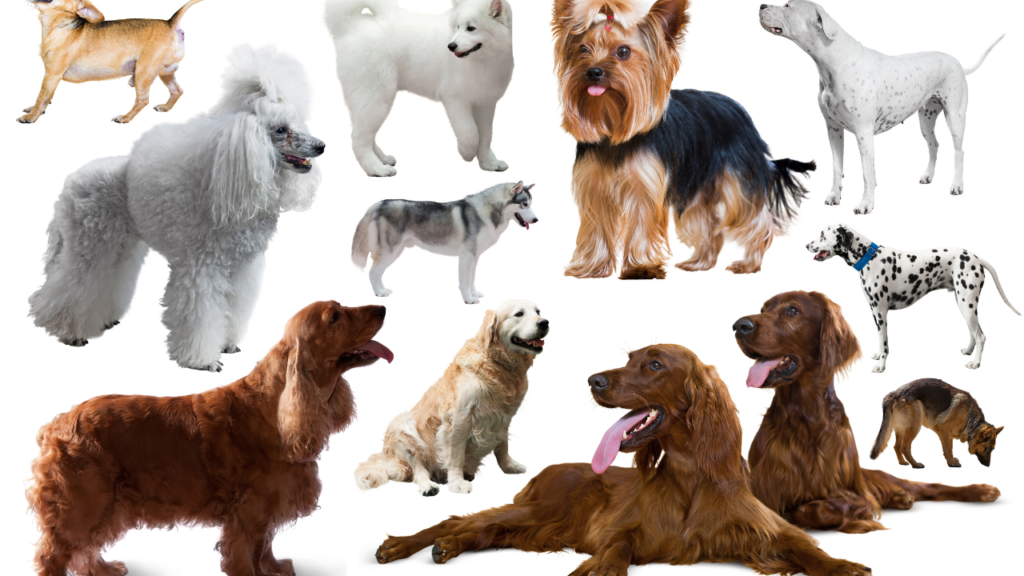
Have you ever wondered how many dog breeds are there?
It frequently amazes humans how well our dogs comprehend and respond to us. Some of this is undoubtedly rooted in the distant past, when dogs selected us to be their companions. However, much of it is the result of thousands of years of selective breeding.
More recently, our pets have fallen neatly into different breeds since we selected specific features that are common to a particular type of dog. For example, you’ll recognise a German shepherd’s coat and size from 100 feet away and most likely recognise a Chihuahua’s yap without even seeing them. The question is, how many dog breeds are there? We will walk you through the specifics.
What constitutes a purebred dog?

When you rescue a darling from the pound, you’re likely to wind up with a mongrel, which is a combination of different breeds. A purebred dog belongs to one of the recognised official breeds, such as the Newfoundland, Labrador retriever, or Shih Tzu.
While it is not often possible to tell merely by looking, breeds are distinguished by their colouring, body shape, and size, as well as the skills for which they are noted. Purebred dogs frequently arrive with documents proving their parentage. Not sure what kind of dog you have? DNA testing can reveal certain secrets, but it will not qualify your dog for membership in one of the purebred dog clubs.
What constitutes a breed group?
Breed groupings have been developed by regulating bodies to assist in the classification of various dog breeds. The American Kennel Club (AKC) recognises seven separate groups, and each breed belongs into one of these categories: sporting, hound, working, terrier, toy, herding, and non-sporting.
Understanding which group your dog belongs to might assist provide a larger context when considering their breed features. For example, if you have a border collie, you should be aware that they are a member of the herding group and will most likely have herding tendencies combined with strong intelligence.
How are breed standards determined?

Several organisations around the world contribute to the establishment and maintenance of breeding standards. In the United States, AKC parent clubs (national organisations concentrating on a certain breed) create criteria, which are subsequently approved by the AKC board of directors. But you should also be familiar with the British Kennel Club, the Australian National Kennel Council, and the World Canine Organisation. The American Kennel Club (AKC) is almost 100 years old and does much more than certify dogs and host shows. It promotes for proper canine training and treatment and has led the way in helping dogs transition from workers to family members.
How many breeds are there?
Needless to say, it depends on whom you ask. Remember that we aren’t adding any mutts or new designer dogs, such as golden doodles, because they are still considered mixtures. Instead of measuring the total number of breeds, we’d like to know how many recognised purebred types exist.
The AKC has over 200 different types of dogs on its roster, which can vary from time to time when the number of animals in a breed falls below a certain level or a new breed of canine is added. Worldwide, the number is much higher, with the World Canine Organisation listing 360 different breeds.
How do you create a dog breed?
It’s a long and difficult process, but one crucial thing that we discussed is that a particular number of members of that breed must exist. This means you can’t have a breed with only a few pals who fit that description. Furthermore, you must develop a set of criteria for the breed and research the health issues and other critical traits so that there is a standard to stick to. Then you submit some highly formal documentation to the AKC or another organisation. And wait.
While dogs share more than 99% of their DNA with every other dog in the world, breed characteristics have evolved over hundreds of years of selective breeding. That is why bringing home a Great Dane is not the same as adopting a Yorkie. It also means you should research the characteristics that distinguish your breed of dog, such as the amount of exercise required, common health conditions, and expected longevity. Knowing more about your dog will assist you enter into pet ownership with a clear idea of what makes your animal unique and what to expect from their care.
